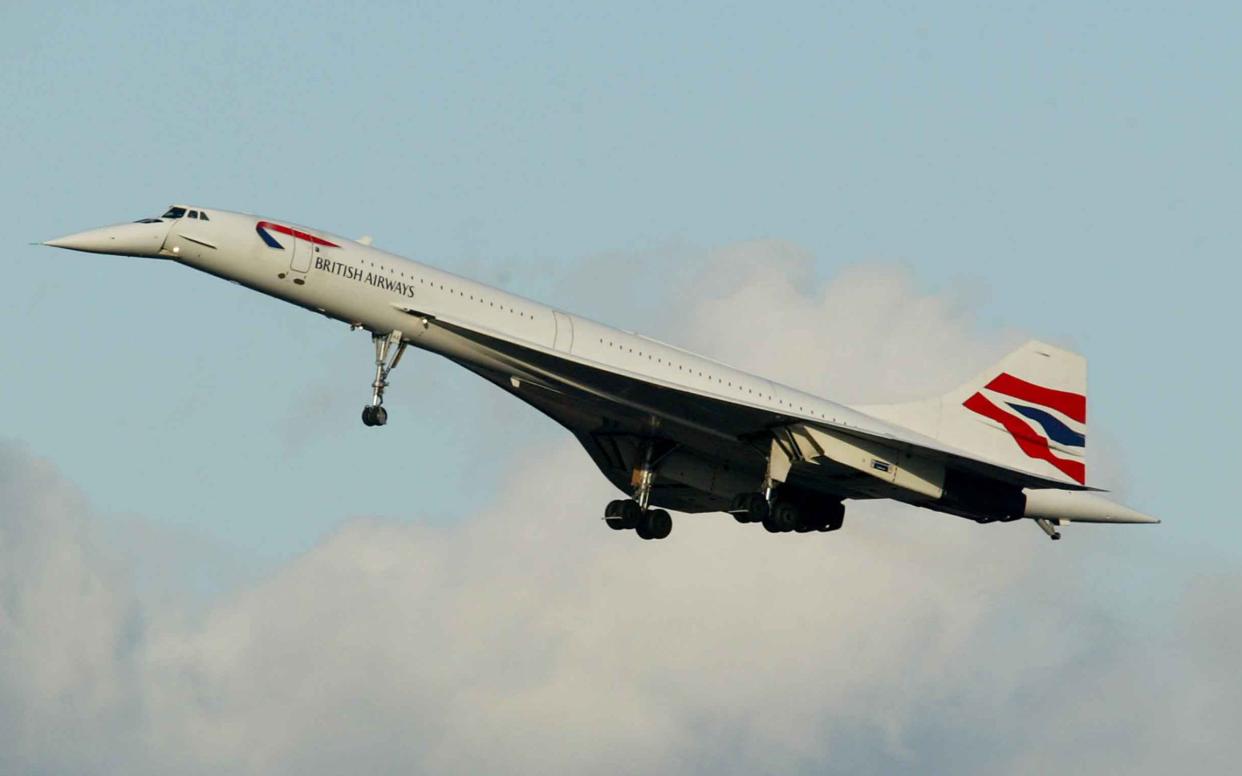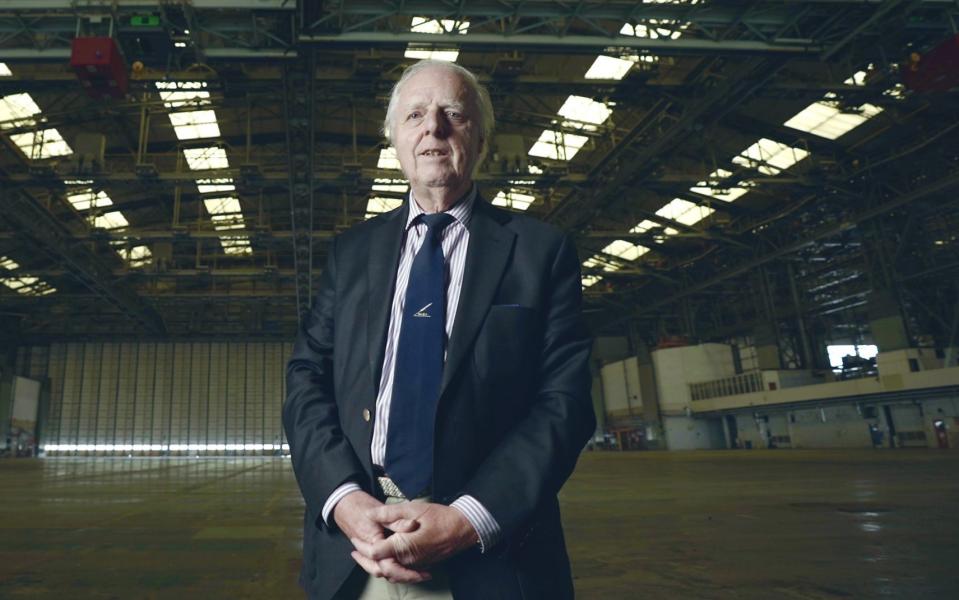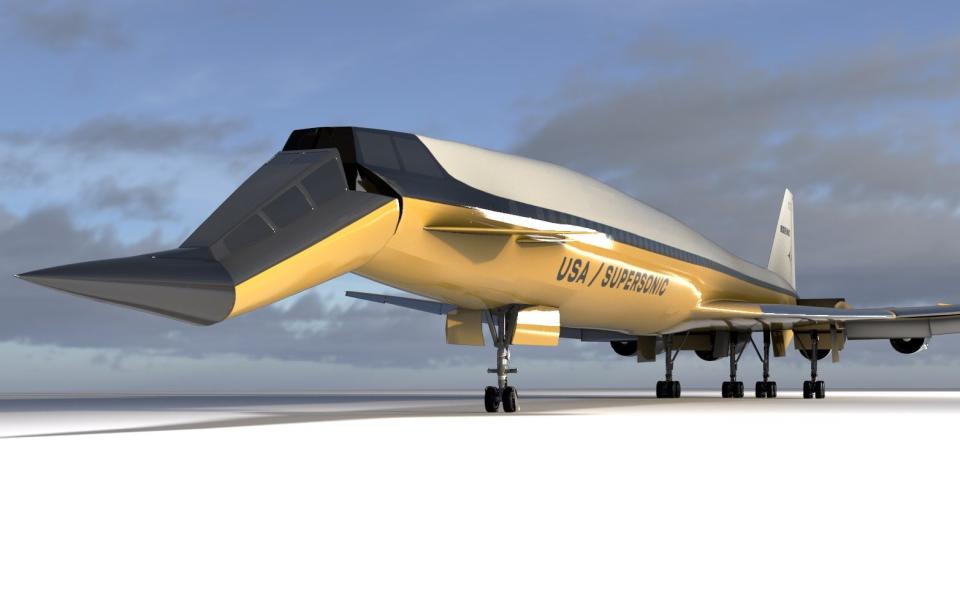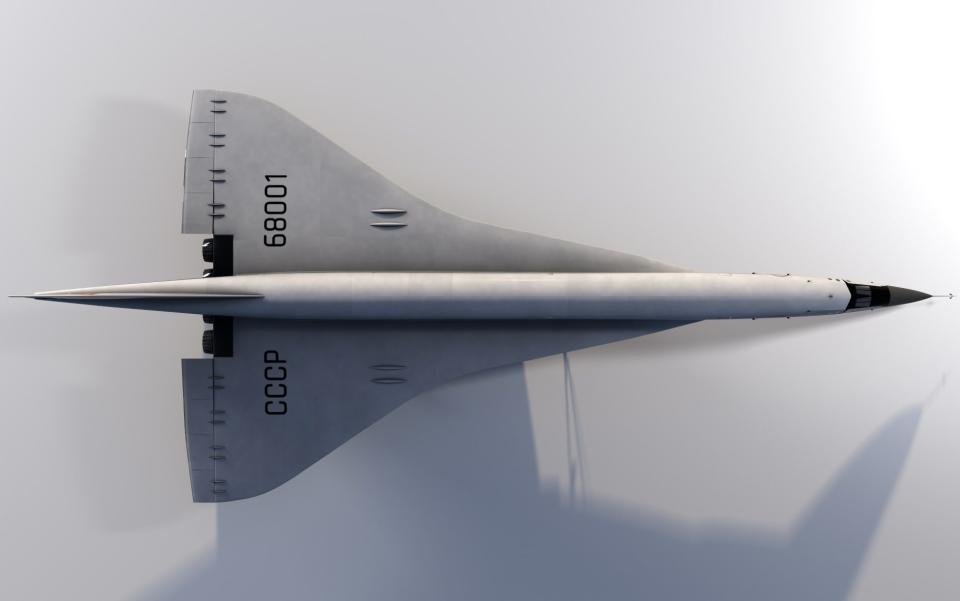How the Concorde plans were secretly given to the Russians

With the rich benefit of hindsight, John Britton isn’t entirely surprised there was a Soviet mole in the factory. It was a long time ago, 1965, but something – or someone – at Filton Aerodrome seemed fishy.
“We had dozens, maybe hundreds of people working on the project, and we didn’t have enough permanent staff so we took on contractors, all sorts of characters,” Britton says. At the time he was a 19-year-old apprentice engineer, working for British Aeroplane Company (BAC) in the design office for a supersonic, passenger-carrying aircraft. An aircraft that would, ideally, fly before the Soviet Union’s competing effort did.
“There was one chap working there, he was a strong Eastern European-type character – he drove a Moskvitch or a Lada, one of those car makers. He used to stay behind, he’d do a lot of overtime in the drawing library, taking prints off the microfilms of designs...”
Britton, who is now 76, initially assumed the man – he thinks his name was George – was merely conscientious and needed copies for his work. He can titter at the memory now. “It was only afterwards, when the Soviet aircraft came out and it looked remarkably like Concorde, when we thought… ‘Ah’.”
Sunday marks 20 years to the day since Concorde – the aeroplane Britton and his colleagues created, and which became an icon of British ambition and ingenuity in the second half of the 20th Century – made its final flight, taking off from Heathrow for the short journey back home to Filton, near Bristol.

Concorde was, of course, an immensely successful joint enterprise between Britain and France. While Britton and his BAC colleagues were working on prototype 002 in the 1960s, his counterparts at Aerospatiale in Toulouse were dealing with 001. Yet it was just as much a product of the Cold War.
As the space race raged and dominated headlines, the US and the Soviet Union were equally competitive about being the first post-war superpower to create a commercial jetliner that could travel faster than the speed of sound. Both started work on secret projects, at the same time that Britain and France – who were less hell-bent on imprinting their superiority on geopolitics, but blessed with many of the world’s finest engineering minds – were in pursuit of the same goal.
It has been known for decades that the three-horse race wasn’t run entirely fairly. While the Americans, with their colossal and largely pointless Boeing 2707, never got close to getting airborne (they scrapped the project in 1971), the Soviet-built Tupolev Tu-144 won the race in 1968. When it did, though, its design similarities to Concorde appeared to confirm suspicions that the blueprints might have been leaked by espionage.
In the late 1990s, it was revealed that an aeronautical engineer codenamed Agent Ace was one such spy. Recruited in 1967, he allegedly handed over some 90,000 pages of detailed technical specifications on new aircraft – including Concorde, the Super VC-10 and Lockheed L-1011 – to the KGB, the foreign intelligence and domestic security agency of the Soviet Union.

Agent Ace’s identity has never been uncovered, but a new two-part Channel 4 documentary, Concorde: The Race for Supersonic, does just that. After cross-referencing what is known about Ace with records smuggled out of Russia by dissident KGB officer Vasili Mitrokhin, they reveal that he was Ivor James Gregory. Born in Hong Kong in 1909, we know he moved to Europe and trained in engineering, but little else is confirmed other than the secrets he passed on.
These included not just details of Concorde’s instantly recognisable design, but also plans for the Rolls-Royce/Snecma Olympus 593 – the plane’s engine. “It’s really quite striking. Unfortunately we cannot get any granular detail about his motivations, or how he was recruited,” says academic and historian Calder Walton, author of Spies: The Epic Intelligence War Between East and West.
“There’s nothing to suggest he was an ideologically committed communist. I think it’s more likely that there was money. All we know is that he was an extraordinarily productive agent.”
Smuggling some 90,000 files is easily dismissed in our age of hard drives and terabytes, Walton adds, “but this was old school. We don’t know his methods and it’s not difficult to imagine this was the work of a Minox camera, taking photographs of the documents.” Nor do we know how he passed the secrets on, but Soviet spies and ‘dead drop’ points were all over London at the time.
Whether Gregory was contractor ‘George’, who Britton remembers doing so many late nights in the factory, isn’t clear (it does seem unlikely he would have been Eastern European), but there’s every chance Ace wasn’t working alone.
“We may not know Gregory’s motivations, but we know the Soviets’. Especially in the 1970s, during détente, in the West the US thought it would be an opportunity to let the Soviets become a ‘responsible player’ within international relations, while the Soviets saw it as a chance to steal as much technical and scientific intelligence from the West as possible,” Walton says.
“Ultimately, this was absolutely not unique to Concorde; that is just one tiny part of a much wider effort across all different sectors. And it’s exactly the same thing we see with China now.” The Soviets wanted plans for infrastructure projects and government secrets; the Chinese in 2023, Walton says, are more interested in artificial intelligence and gene editing technology.
Jonathan Glancey, author of Concorde: The Rise and Fall of the Supersonic Airliner, notes that while Concorde is viewed in many ways – as an icon of British-French design, the ultimate luxurious way to travel, a glimpse into an imagined future – it was also, plainly, just “an extremely political aircraft.”
“The Soviets had to hurry – under extreme pressure from their government, they only had a few years to get theirs in the air,” Glancey says. “But of course if they had all the information they needed to make the Concorde, they wouldn’t have made an aeroplane that was ultimately a failure.”
The Tupolev Tu-144 – nicknamed ‘Concordski’ by Western journalists – really was a failure. Though it got airborne first, its performance was unreliable, its range short and its supersonic capabilities limited. There were seven years between Concorde’s first flight, in 1969, and its entering service in 1976; with almost 5,000 hours of testing, it is likely the most tested aircraft in history.
The Tu-144, on the other hand, was hastily delivered and scarcely finished. It ended in tragedy: the Tu-144 had two crashes, including one at the 1973 Paris Air Show, when its pilot attempted to mimic Concorde’s impressive aerobatic display – which may have been beyond the aircraft’s capabilities.
“The one thing they didn’t copy was the air intake control system, which was the heart of the aeroplane, and the thing that made it work,” says Britton, who went on to become Concorde’s chief engineer for the last few years of its time in service. After four decades working on the aircraft, he’s now long retired, too, but is as sharp an engineering mind as ever.

“Jet engines will only operate subsonically; they won’t accept supersonic air, so what you need as the aircraft accelerates and goes supersonic, you have to slow the air down that’s going into the front of the engine. We’d do that with the intake control system, which continually adjusts as the aircraft gets to Mach 2.”
The system designed by British and French engineers for this crucial process was, in many ways, the secret to Concorde. “And the Russians never got it,” Britton says, with pride. The given theory is that it was simply much too complicated to copy and replicate from images.
Britton still marvels at the power and beauty of Concorde today, but in the late 1960s it was utterly mind-blowing. He has a photograph from the time that shows it best. There, on the airport apron just outside the hangar in Filton, are a few parked cars, all belonging to the engineers working inside.
“That’s in the background. You’ve got things like Morris 1000s, Ford Anglias – the cars people were driving at the time.” And in the foreground, looming over them all and looking like a time traveller from a century hence, is a sleek, gleaming Concorde.
“It’s incredible. It looks like a total anachronism, really. But that was the era – we were designing supersonic aircraft, while people were still driving around in Anglias…” He and hundreds of colleagues gathered on the runway to watch 002’s first test flight in April 1969, from Filton to Fairford in Gloucestershire, and whooped as it took off. “It was absolutely incredible.”
Throughout the few short decades it was in the skies, mainly shuttling 100 passengers across the Atlantic at more than twice the speed of sound, Concorde always looked a step out of time. “In a way, it represented a future we never quite reached, a more ideal, progressive future that people dreamed of,” Glancey says. Its appeal is obvious; even the layperson can appreciate the beauty of that remarkable arrow design, and marvel at the fact it was something of a time machine.
“Arrive Before You Leave” was the tagline, and it did. London to New York took a little over three hours, but Concorde still holds the record for the fastest crossing of the Atlantic by a civil aircraft. On February 7 1996, it did it in two hours, 52 minutes and 59 seconds.
“When we looked up at the skies, we were entranced by it. As it came over London this stunning thing came over, and we cried ‘Look, there’s Concorde!’ Nobody said that about a jumbo jet or a 707, and they definitely don’t now they’re more like big buses with wings. But they’d say ‘Concorde’, as if it was this singular machine [as it was, only 20 were built, including six in development],” Glancey says.
![Walton: ‘We don’t know [Agent Ace’s] methods and it’s not difficult to imagine this was the work of a Minox camera, taking photographs of the documents’](https://s.yimg.com/ny/api/res/1.2/39uNxP.8vBBJPMnEZxpMIQ--/YXBwaWQ9aGlnaGxhbmRlcjt3PTk2MDtoPTYwNA--/https://media.zenfs.com/en/the_telegraph_258/beac14caa56ea6589e821e6859527db2)
“In a way that’s true. It was singular, and lonely. It flew in this lonely air space, thousands of feet above all the others, so much faster, and a different league. A different world, really. And that’s before you got inside…”
Though it lost the battle to reach the skies first, Concorde won the supersonic war. In the end, various factors conspired to put it out of service in 2003. According to Britton, for instance, the terrorist attacks on 9/11 “killed a third of British Airways’ frequent fliers – which was most of Concorde’s passenger list”. That may or may not be accurate, but the downturn in air travel after 9/11 certainly was.
The fatal crash of Air France Flight 4590 after taking off from Charles de Gaulle airport in 2000 – which killed 109 people on board and four on the ground – was another factor. Despite being the only fatal Concorde crash in history, and the aircraft being statistically one of the safest ever built, the event contributed to a sense that it was beginning to be more trouble than it was worth.
“Those factors are important, but really, it was this singularity of Concorde again: the key manufacturers didn’t want to make expensive spare parts for such a small fleet of aircraft. So in the end it was something very standard that brought it down: ‘No spare parts, guv,’” Glancey says.
The fleet of remaining Concorde aircraft, which are spread around the world at various airports and museums, are mainly in excellent condition. A feature of cruising at Mach 2 at 60,000ft is that the air is so dry, and the skin of the plane so hot, that moisture couldn’t begin to corrode the plane. But as largely analogue machines, they cannot re-enter service.
There are plans for new supersonic aircraft – there are always plans for new supersonic aircraft – but in Glancey and Britton’s estimation, these are more likely to be business jets. Supersonic aircraft designed for masses of paying passengers are, at least for now, consigned to history.
But it’s a history that keeps turning up new surprises. “In a way, Concorde is the last in a particular line when it comes to thinking about ambition in aviation, beginning with the Wright Brothers,” Glancey says. “It was all about the poetry of flight. It’s all just prose now.”
Concorde: The Race for Supersonic begins on Channel 4 on Saturday November 25 at 9pm

